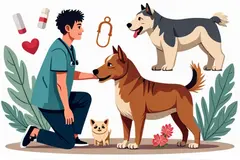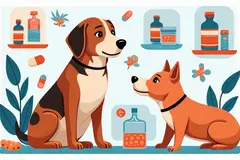 An organ in the roof of a cat's mouth that is linked with the sense of smell and taste.... ↪ Read more
An organ in the roof of a cat's mouth that is linked with the sense of smell and taste.... ↪ Read more Veterinary Drug Handbook (VDH) is the reference veterinarians turn to when they want an independent source of information on the drugs that are used in veterinary medicine today.
-
 Is veterinary Liniment Gel safe for humans?
Is veterinary Liniment Gel safe for humans? -
 Giving Your Cat A Pill
Giving Your Cat A Pill -
 Dog Aggression
Dog Aggression -
 Dogs May Help Boost Infant Health
Dogs May Help Boost Infant Health -
 Animal-Assisted Therapy, Veterinary Social Work, & Social Work With People & Pets in Crisis
Animal-Assisted Therapy, Veterinary Social Work, & Social Work With People & Pets in Crisis -
 On-demand veterinary service gives advice on poorly pets
On-demand veterinary service gives advice on poorly pets -
 Should we stop throwing sticks for dogs?
Should we stop throwing sticks for dogs? -
 Can breathing in cat hair be harmful?
Can breathing in cat hair be harmful? -
 What does PU/PD mean in veterinary medicine?
What does PU/PD mean in veterinary medicine? -
 Bill calls for ban on sales of dogs, cats in Maine pet stores
Bill calls for ban on sales of dogs, cats in Maine pet stores -
 Common Meanings Of Cat Behavior
Common Meanings Of Cat Behavior -
 What does DVM stand for in veterinary?
What does DVM stand for in veterinary? -
 Curing Bad Cat Breath
Curing Bad Cat Breath -
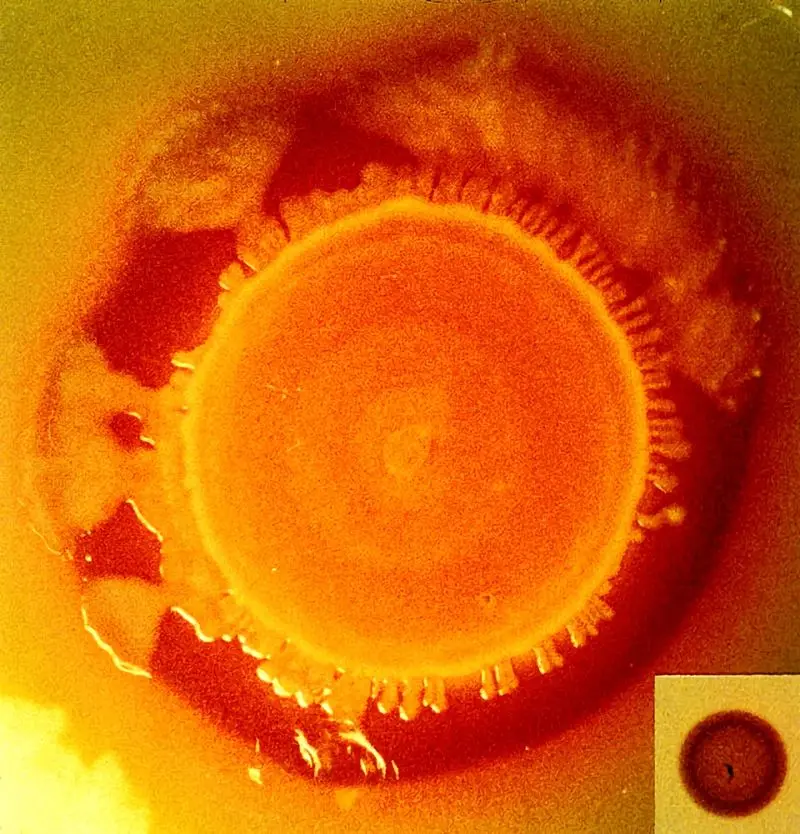 New Tracking Tool for Pathogen Investigators
New Tracking Tool for Pathogen Investigators -
Can binturongs be kept as pets?
-
 How long do instruments stay sterile after autoclaving veterinary?
How long do instruments stay sterile after autoclaving veterinary?
Jacobsen's Organ
 An organ in the roof of a cat's mouth that is linked with the sense of smell and taste.... ↪ Read more
An organ in the roof of a cat's mouth that is linked with the sense of smell and taste.... ↪ Read more Instinct
 A propensity that urges an animal to perform actions that are for the most part useful or beneficial; a natural or inherent aptitude that is largely hereditary and usually unalterable.... ↪ Read more
A propensity that urges an animal to perform actions that are for the most part useful or beneficial; a natural or inherent aptitude that is largely hereditary and usually unalterable.... ↪ Read more Inate
Inherent
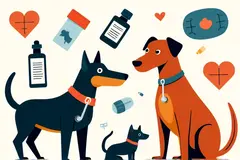 Implanted by nature; intrinsic, innate; involved in the constitution or essential character; belonging by nature or habit.... ↪ Read more
Implanted by nature; intrinsic, innate; involved in the constitution or essential character; belonging by nature or habit.... ↪ Read more Hysterectomy
Humane Society
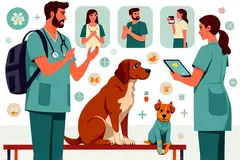 Local organizations that rescues and cares for lost or homeless cats and helps find them new homes... ↪ Read more
Local organizations that rescues and cares for lost or homeless cats and helps find them new homes... ↪ Read more Housetraining
Hookworm
Hereditary
 Derived from ancestry; describing a genetically transmitted or transmittable characteristic; inborn; independent of prior learning.... ↪ Read more
Derived from ancestry; describing a genetically transmitted or transmittable characteristic; inborn; independent of prior learning.... ↪ Read more Heat
 A period of time when female cats are sexually receptive. Estrus. Period of fertility when the cow is receptive to the male. It only lasts 24 hours in the bovine.... ↪ Read more
A period of time when female cats are sexually receptive. Estrus. Period of fertility when the cow is receptive to the male. It only lasts 24 hours in the bovine.... ↪ Read more Hand-feed
 A feeding process that offers a cat food periodically during the day and for a limited time (usually twice a day, for about 20 minutes).... ↪ Read more
A feeding process that offers a cat food periodically during the day and for a limited time (usually twice a day, for about 20 minutes).... ↪ Read more Habit
 A fixed or constant practise established by frequent repetition; an acquired mode of behaviour that has become nearly or completely involuntary.... ↪ Read more
A fixed or constant practise established by frequent repetition; an acquired mode of behaviour that has become nearly or completely involuntary.... ↪ Read more Popular Diagnoses
Packed cell volume (PCV, hematocrit) Reflex ovulator Mucolytic Microfilaricide Bronchodilator Hematocrit Glucocorticoid Monoamine oxidase inhibitor (MAOI) ↪ All veterinary diagnoseOther Diagnoses
Mydriasis Myelogram Nebulize Nephropathy Nephrotoxic Neuropathy Neurotransmitter NeuterPopular Veterinary Clinics
VCA Welborn Animal Hospital, 7860 Washington Avenue Kansas City, KS 66112 USA MedVet Columbus, 300 East Wilson Bridge Road, Worthington, OH Rutland Veterinary Clinic & Surgical Center, 90 East Pittsford Road, Rutland, VT VCA Paradise Valley Emergency Animal Hospital, 6969 East Shea Boulevard Suite 150 Scottsdale, AZ 85254 USA Connecticut Veterinary Center & Pet ER, 470 Oakwood Ave West Hartford, CT 06110 USA Norway Veterinary Hospital, 10 Main St P.O. Box 273 Norway, ME 04268 USA Craig Road Animal Hospital, 5051 West Craig Road, Las Vegas, NV Abri Veterinary Hospital Inc, 1449 Trademart Boulevard Winston-Salem, NC 27127 USA ↪ All veterinary clinicsOther Veterinary Clinics
Apollo Animal Hospital, 10707 N 51st Ave Glendale, AZ 85304 USA Sun City Animal Hospita, 10026 Santa Fe Drive Sun City, AZ 85351 USA VCA Northern Animal Hospital, 2611 W. Northern Ave Phoenix, AZ 85051 USA Sunburst Animal Hospital, 5032 West Thunderbird Road, Glendale, AZ Arizona Humane Society, 9226 N 13th Ave Phoenix, AZ 85021 USA VCA Mesa Animal Hospital, 858 North Country Club Drive Mesa, AZ 85201 USA VCA Apache Junction Animal Hospital, 17 North Mountain Road Apache Junction, AZ 85120 USA Gilbert Veterinary Hospital, 1655 South Gilbert Road, AZPopular Drugs
DOXYLAMINE SUCCINATE Doses - PENICILLIN V POTASSIUM Doses - METHYLPREDNISOLONE, METHYLPREDNISOLONE ACETATE, METHYLPREDNISOLONE SODIUM SUCCINATE ACEPROMAZINE MALEATE Doses - PREDNISOLONE, PREDNISOLONE SODIUM SUCCINATE, PREDNISOLONE ACETATE, PREDNISONE Doses - FURAZOLIDONE Doses - FERROUS SULFATE Doses - LEVAMISOLE ↪ All veterinary drugOther Drugs
Legend-HC LIDOCAINE HYDROCHLORIDE INJECTION 2% 20 mg/mL LIDOJECT Lidocaine 2% Injectable Lidocaine Hydrochloride Injectable-2% LIDOCAINE INJECTION Local Anesthetic Lidocaine Hydrochloride 2% Isopropyl Alcohol 70% Isopropyl Alcohol 99%Popular Terms
Subalbinotic Steatis Uteroverdin Paradoxical CSF acidosis Figure of 8 suture pattern Nerve root signature Ovariohysterectomy Abrev OVH Signalment ↪ All veterinary termOther Terms
Cell mediated immunity Abrev CMI Cellular immunity Central venous catheter Central venous pressure Abrev CVP Cerebellum Cerebrum Cerumen Ceruminolytic agentsveterinary-help.com
© 2011-2025 Veterinary Clinics, Diagnoses, Terms and Drug Handbook Online




